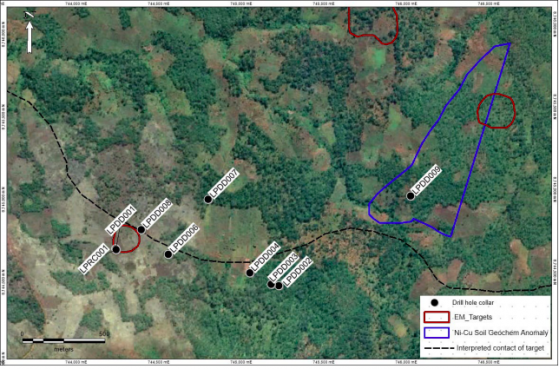Resource Mining Corporation Ltd (ASX:RMI) has detected the presence of nickel and copper sulphide mineralisation at the Liparamba Nickel Project in Tanzania, the first confirmation of such mineralisation in the large under-explored region.
The battery minerals explorer made the discovery during a maiden diamond drilling program in September last year, when it completed nine holes targeting electromagnetic and geochemical targets.
Anomalous nickel-copper values such as 0.35-0.40% nickel and 0.20-0.23% copper were detected within LPDD009 at 133-135 metres.
The company will review the results to decide what further exploration programs will be undertaken within the current project areas and the greater region.
Location of the diamond drill holes at Liparamba.
Separately, RMI has also received the results from a soil survey at the Mbinga Nickel Project, which indicated a large geochemical anomaly extending the coincidental geophysical and geochemical anomaly previously defined by BHP/Albidon.
The company believes the potential for Mbinga to also contain nickel-copper mineralisation is high given the success at Liparamba, which is located within a very similar large soil anomaly.
Soil survey results at Mbinga.
Exciting target zone
“The discovery of nickel-copper sulphide mineralisation within the first drill program ever completed within the Liparamba Nickel Project is a positive outcome and provides a very exciting opportunity for RMC,” executive chairman Asimwe Kabunga said.
“With these results, we are able to apply the knowledge to extend the exploration works at Liparamba, in addition it has also meant the Mbinga Nickel Project, part of the regional exploration area, has located an exciting target zone in what is now known to be a series of mafics that may contain significant economic mineralisation.”
Read more on Proactive Investors AU
